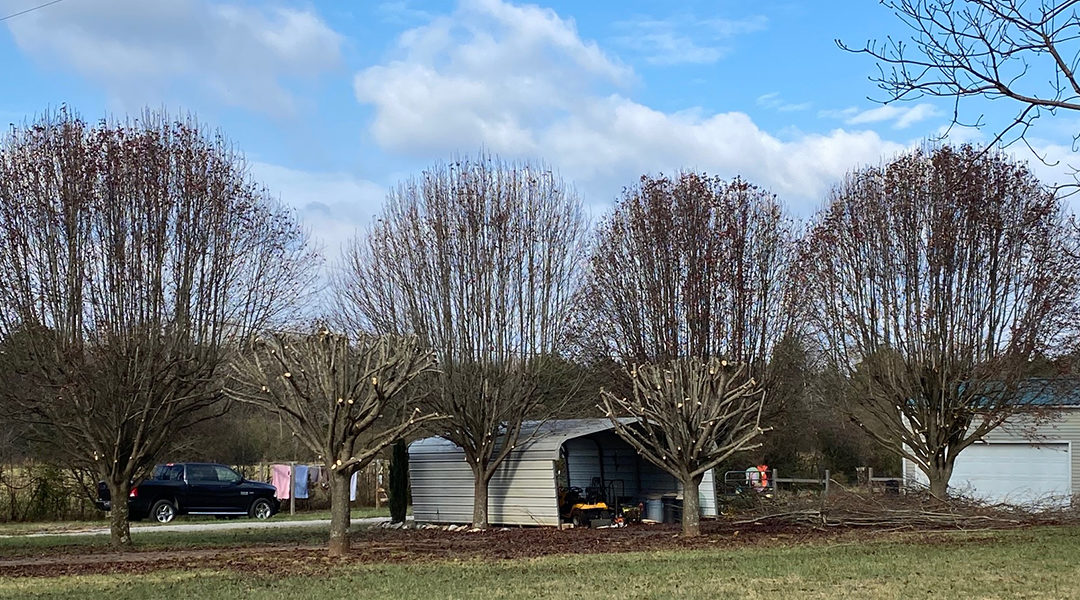Every year, many residents and business owners in Tennessee find all kinds of decayed trees in their front and back lawns. The going rates for real estate in cities like Columbia and Lewisburg are the most cost-efficient in Tennessee, and people love buying up large swaths of land filled with lush greenery and ponds. Learning to handle decayed trees is not a nice-to-have trick but an essential life skill for keeping the Antebellum Homes Capital free from tree diseases and pests.
Call the Volunteer Tree Company today for advice from the leading tree service experts in Columbia, Tennessee. Our professional arborists will give you a free consultation. We’re experts in handling tree diseases, removing or reshaping hazard trees, and dealing with decayed wood through stump grinding.
Signs of disease and decay can hide well, even in seemingly healthy trees. In this article, our tree care experts will detail how to spot signs of sicknesses and pests, like heart rot, in various tree species.
Why Do Trees Decay?
A tree decays when its internal vascular system comes under fire from pathogens and subsequently dies. Tree sap moves from the roots to the leaves and vice versa, delivering water and essential nutrients that a tree needs to convert carbon dioxide to oxygen to feed itself. With a broken vascular system, you will notice a tree developing leafless patches in its canopy and many brittle branches, inviting more forms of pests to join the feeding frenzy by staying inside the hollow pockets in the trunk.
Fungi and bacteria are microscopic, so you can’t detect them on a tree without professional equipment. They’re capable of ingesting wood and creating massive clefts inside a tree that are hidden from plain sight. Diseased trees won’t have the ability to support their weight after a few months, and you would notice branches falling and large cracks along the trunk.
Many trees have an internal defense mechanism to fend off attackers like needle blight and mildew, but new diseases appear every year, and not all tree species can keep up.
Where Does Tree Decay Start and How Do I Prevent It?
Tree decay begins when viruses and fungi find an opening in the roots or the bark. At the Volunteer Tree Company, our arborists follow scientific pruning methods that prevent viruses from taking advantage of wounds from freshly removed branches. Fungi may also enter from a crack in the trunk or a broken branch from a recent storm.
Insects like spruce beetles, emerald ash borers, and mountain pine beetles look for structural weaknesses in trees under stress to weaken and defoliate them.
For most Americans, picturing deforestation conjures a picture of tractors and bulldozers uprooting century-old trees for greedy corporations and brush fires that span thousands of acres. However, a recent study from the United Nations Food and Agriculture Organization reveals that the world is losing over 86 million acres of forest cover a year from tree-killing insects and fungi.
How Do I Identify Decayed Trees?
Identifying decayed trees can be challenging for people with no arborist training. Many people mistake superficially damaging diseases for tree-killing ones, unnecessarily eliminating curable trees in their hunt for tree decay. Some property managers compromise the well-being of their trees by creating wounds during checkups that fungi and insects can use to enter.
Here are some signs you need to look for:
- Cancers and wounds in the bark
- Large swaths of missing leaves
- Fungal bodies like mushrooms fruiting along a crack
- Trunks that awkwardly lean and carved areas in the bark
- Sawdust near the root area
Call the Experts Today and Prevent Decayed Trees
The best way to prevent tree decay is by scheduling periodic tree inspections from licensed tree care experts. Every tree is a unique and complex creature, and the manifestation of sickness for one species might be a sign of good health for another. Remove dead branches, roots, and stumps from your yard as a first step.
The Volunteer Tree Company is proud to be the number one stump grinding and root removal service in Tennessee. Call us today by dialing (931) 637-5487 to stop decayed trees from taking over your property.


